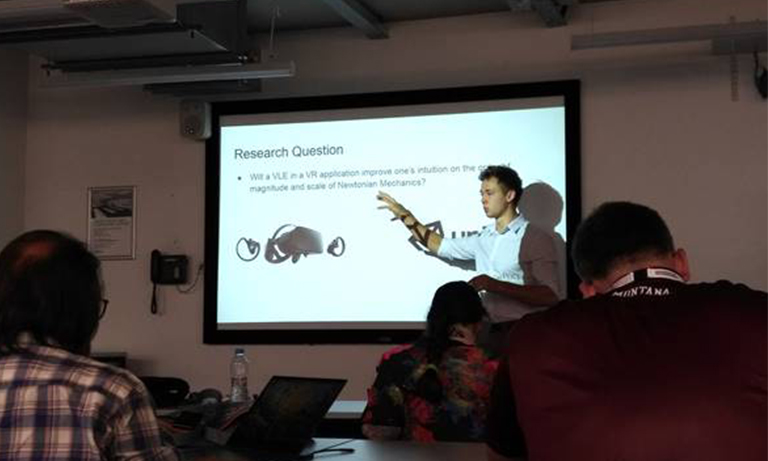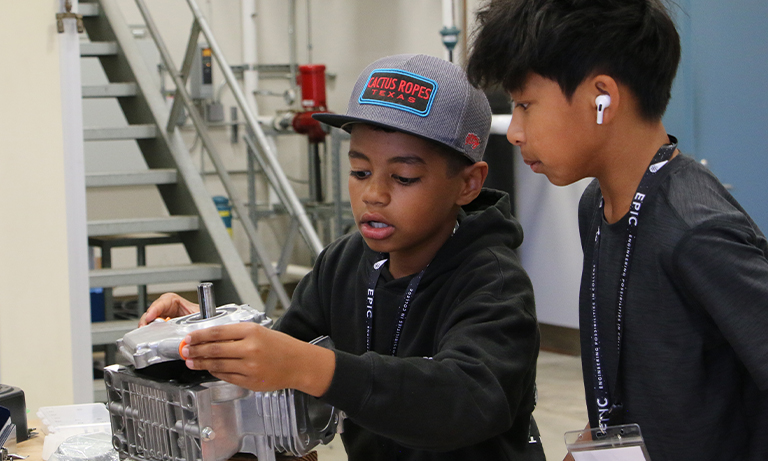Two papers by Computer Engineering undergraduate students Trevor Brown, Jason Lomsdalen and Greg Chu were successfully presented in June at iLRN 2019 in London.
Trevor Brown and Jason Lomsdalen’s performance at their presentation achieved huge praise by the audience. Greg Chu’s paper, “Special Relativity in Immersive Learning Results,” received 3rd place for the Best Graduate Student Paper (notably, there was not a category for undergraduate paper).
“The two publications in the ACM Springer Computer Science Conference underlines the quality outcome of the research work conducted by our students. Greg, Jason and Trevor’s commitment, engagement, cleverness and self-reliability, in short professionalism, allowed me to assign this challenging task to them,” said Computer Science Assistant Professor Christian Eckhardt. “Including undergrads in top-research is broadly unheard of. I am so proud to work with not only highly motivated, but also skilled and smart students, and it shows in the outcome.”

Chu was not able to present at iLRN, but he did conduct a major part of the research work and wrote the publication with Eckhardt and Irene Humer, CENG lecturer. Eckhardt presented the paper at the conference.
Chu’s paper entailed a new genuine way to teach special relativity with a virtual reality simulation. During the simulation, one sits in a spaceship and can travel to all major bodies of the solar system including all planets and their moons, and are able to leave the solar system to travel across the galaxy. While traveling, the user can set velocities up to 99.9…9 (20 digits of nine after the dot) % of the speed of light, making it possible to cross the whole milky-way in seconds, while tens of thousands of years pass on earth.
Having a reference clock on earth as well as the ships clock, the user experiences the effects of time dilation, but also Lorentz contraction, by seeing all objects (planets, moons and stars) warping towards the spaceship in flight direction – an impressive visual experience in virtual reality.

Brown and Lomsdalen’s research raised the question “Is it possible to gain skills in scale and order of magnitude with a virtual reality simulation,” which was positively answered by similarly developing a simulation for throwing objects (Newton mechanic) under different gravitational settings (different planets). Participants guessed the trajectory and distance of impact and experienced the Virtual Learning Environment followed by additional trajectory questions, while checking their improvement. A follow up research work with haptics (actual different weights) can clarify the question if haptics have a significant impact on immersive learning. Their presentation was outstanding and seen by the entire core board of iLRN.
Both Virtual Learning Environments can be experienced at the Mixed Reality Lab in Engineering East building 20-114 by appointment at ceckhard@calpoly.edu.


